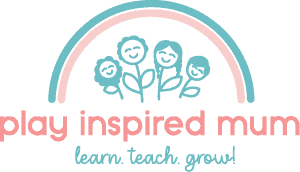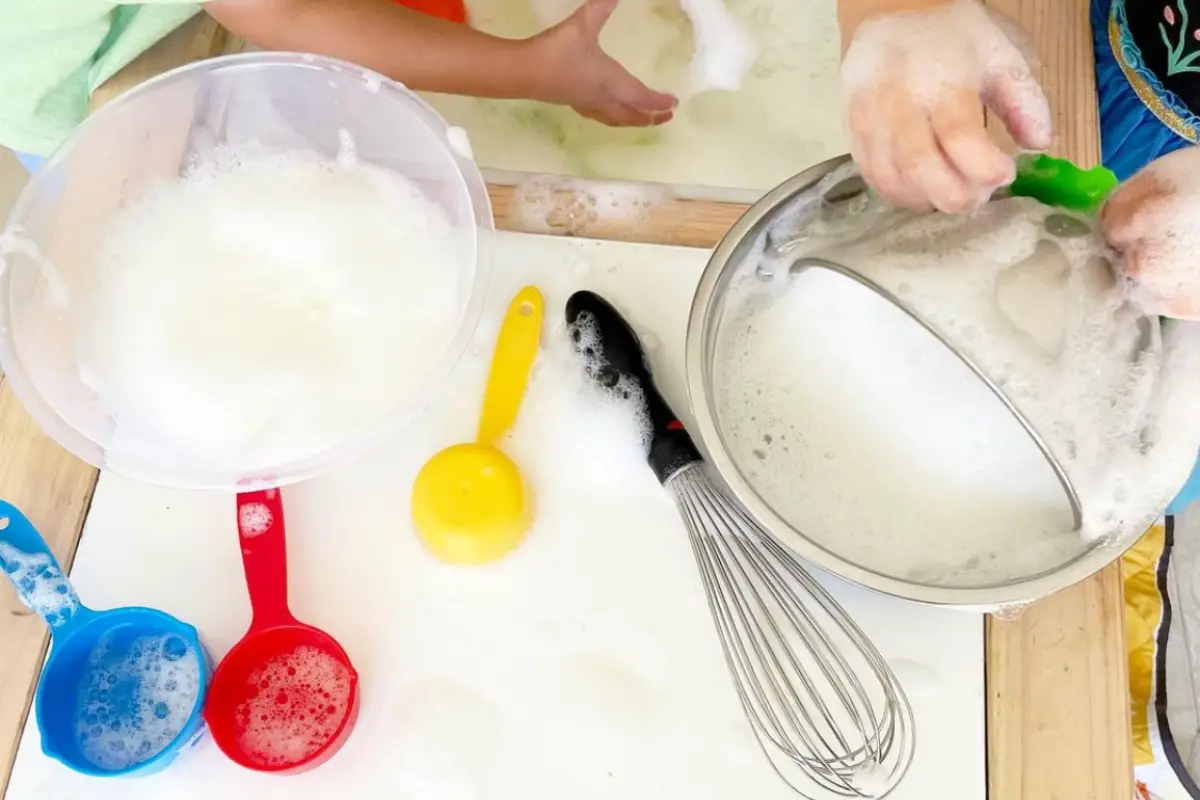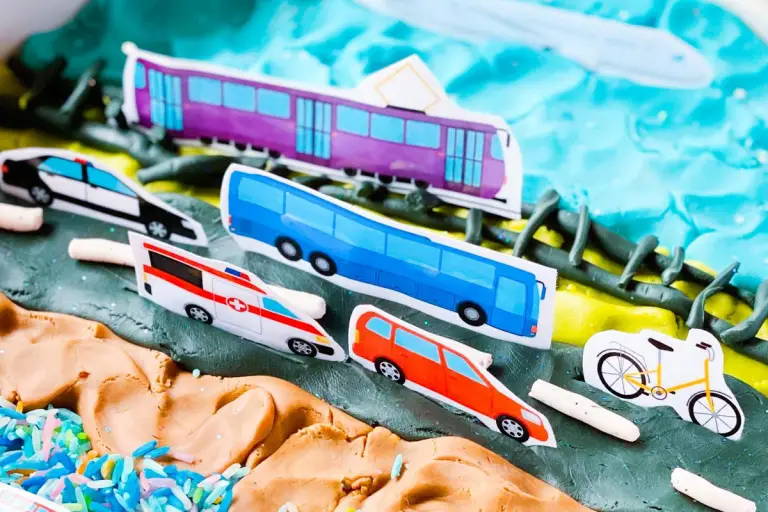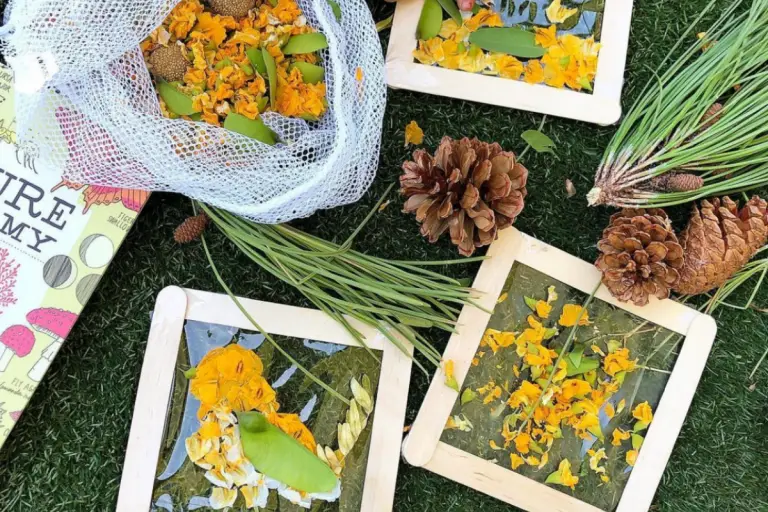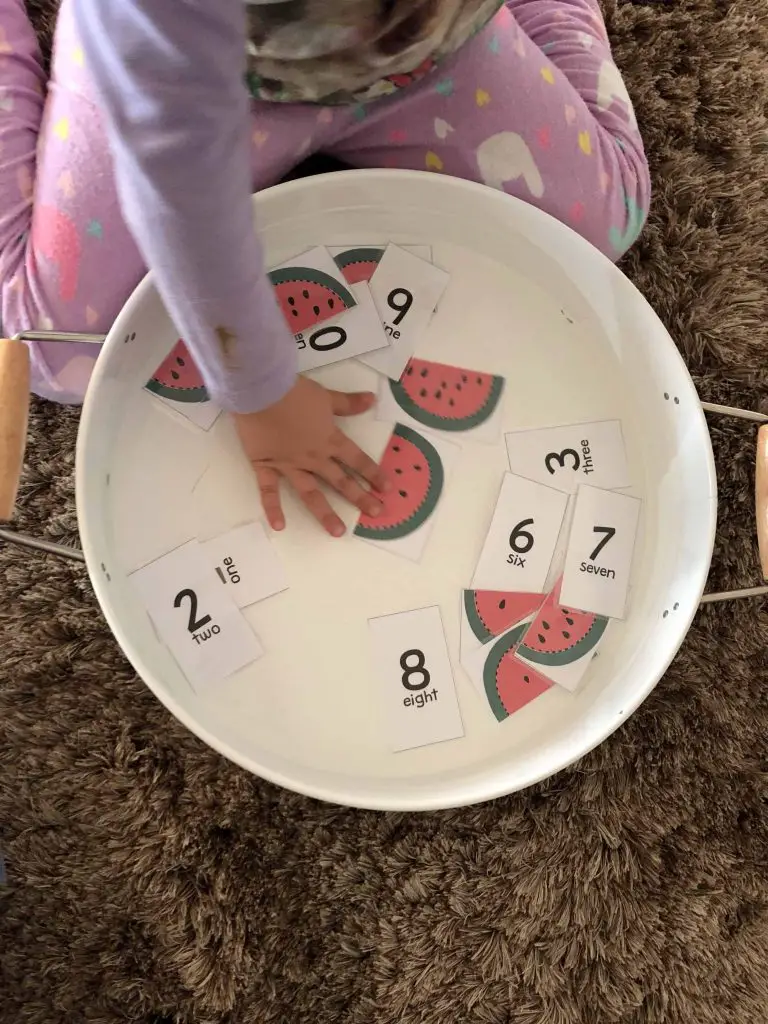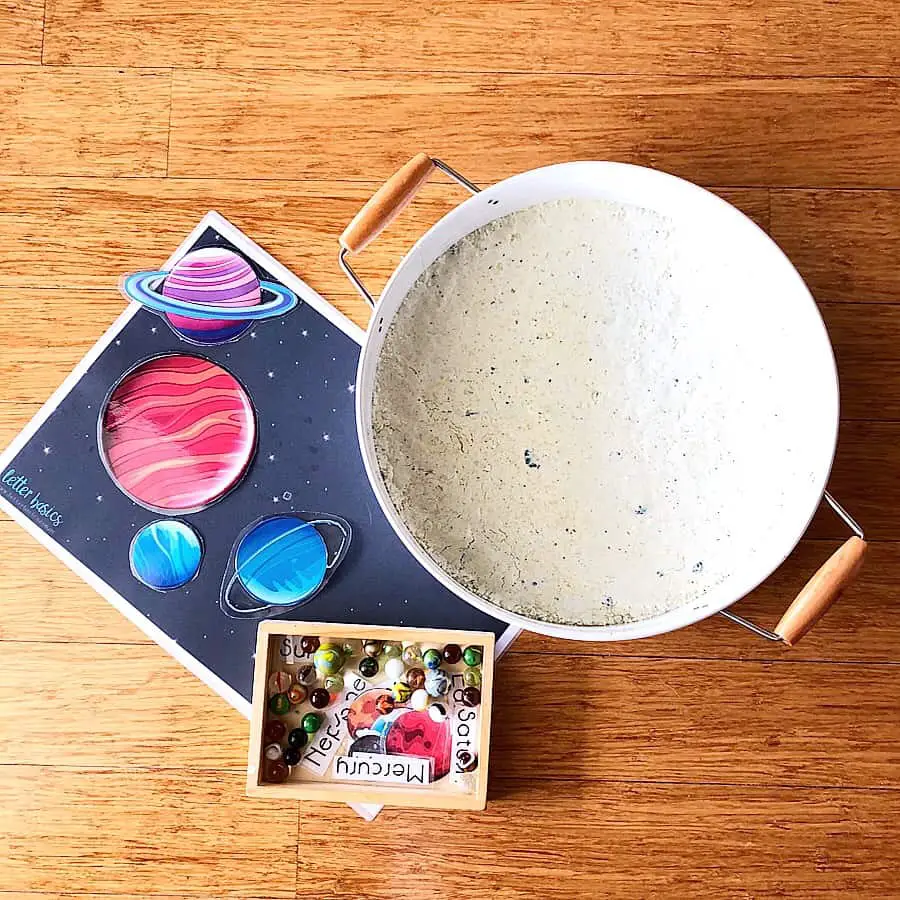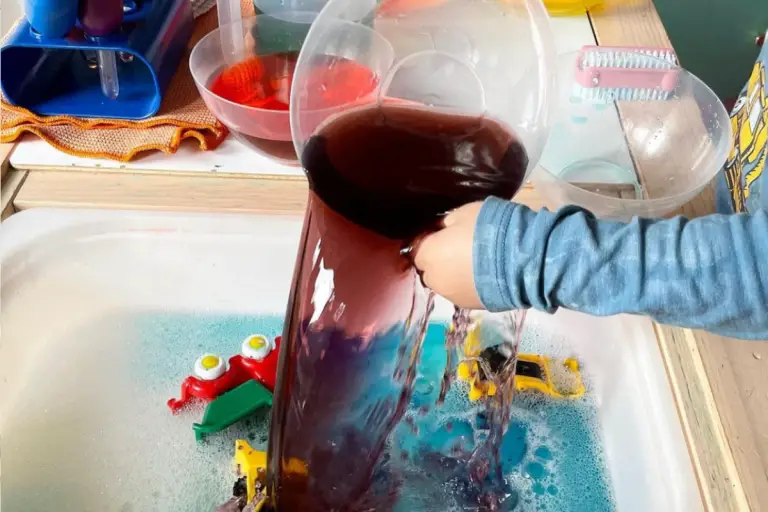Bubbling over with Fun: a Bubble Pouring Station Guide
Disclosure: This blog contains affiliate links which I may earn a small commission from if you purchase through them, at no extra cost to you.
If you are searching for an activity to regulate moods, entertain, encourage development and make some memories, look no further than a bubble pouring station.
The classic pouring station will always have its place in the top activities to do with toddlers.
In saying that, this is better.
Bubbles are better.
Adding bubbles to our pouring station happened when I had a moment of, ‘is this something you could try yourself’ when Miss 7 was sick enough to not go to school, but not so sick that she still had the energy sparkle in her eye that meant quiet time was a mere suggestion that was not going to be taken seriously.
Best. Idea. Ever!
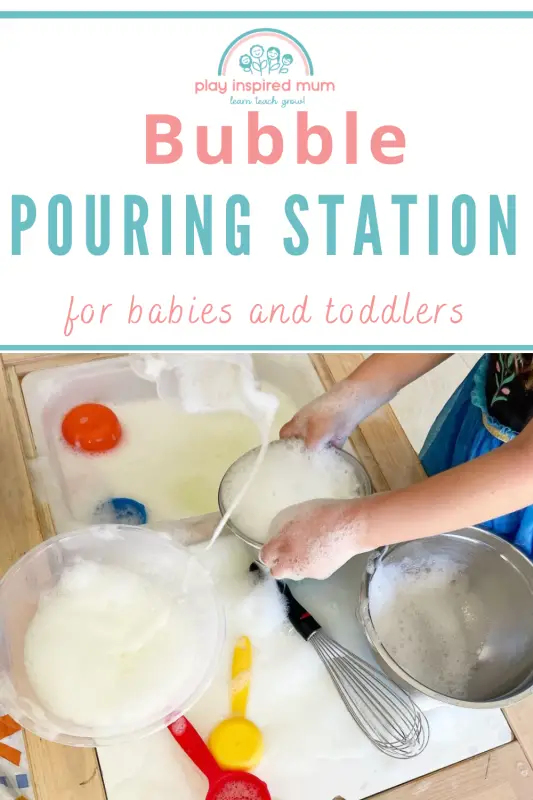
Bubble Pouring Station Play
I’ve always believed in the magic of bubble play and water play for the little ones.
These activities are not just about splashing and making messes.
They’re incredible tools for sensory play.
Sensory play ideas, like the bubble pouring station we’re about to dive into, are not only easy to set up but also pack a ton of benefits for child development.
These playful moments strengthen fine motor skills and pave the way for learning through play, a concept I hold dear.
This guide will walk you through setting up your own bubble pouring station, making every day a delightful learning adventure for your toddlers and preschoolers.
Why Choose Bubble Pouring Station Play?
Bubble play has emerged as a beloved avenue for sensory stimulation and the honing of fine motor skills among toddlers and preschoolers.
It offers them a delightful experience while fostering critical developmental milestones.
Immersing little hands in bubble solution, they will master the art of grasping and manipulating the whisk, enriching their fine motor prowess.
This extends beyond mere fun; it’s a solid foundation for learning through play and play-based learning.
The act of transferring bubbly liquid from one container to another not only captivates their attention but also plays a significant role in enhancing bilateral coordination and gross motor skills.
These activities are seamlessly intertwined with effortless joy, yet they contribute profoundly to the cognitive and physical growth of young learners.
Thus, engaging in bubble play is not just about making memories; it’s about paving the way for invaluable learning experiences.
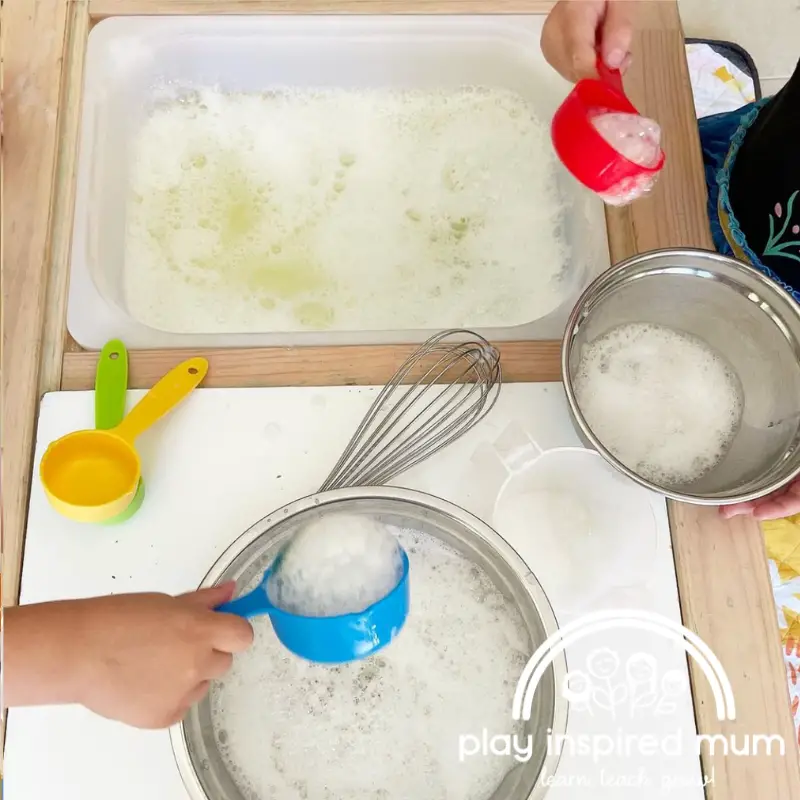
Materials Needed
Gathering the essentials for a bubble pouring station sparked my children’s excitement and curiosity.
- Kitchen supplies, a testament to the simplicity and accessibility of setting up, became my first target; bowls, measuring cups, and ladles
- Dishwashing liquid, for its role in creating those magical bubbles, had to be non-toxic to ensure the little ones’ safety.
- A whisk would serve as the perfect tool for whipping up a frothy wonderland.
- Waterproof play mats promised a mess-free zone, easing the clean-up process that would follow the fun.
- If available, a flisat table would elevate the experience, providing the perfect platform for our bubble adventures.
The focus on non-toxic materials reassured me that the fun would come with peace of mind.
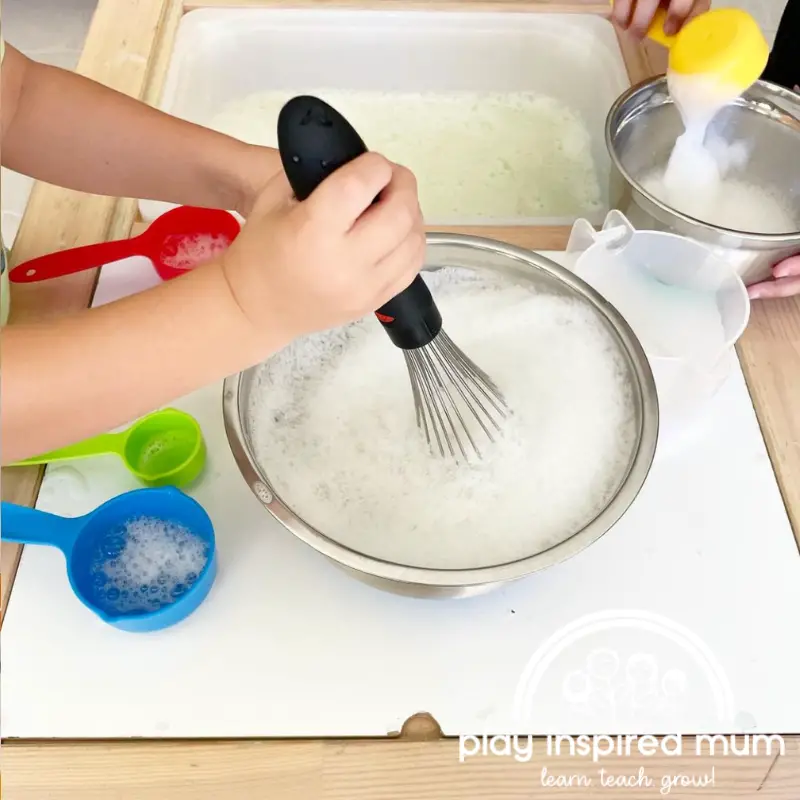
Setting Up Your Bubble Pouring Station
We have been using bubbles in our sensory play for years.
Rainbow bubble foam is on a regular rotation.
We will often mix up multiple colours and the children turn the blend into a slurry of hues with busy hands.
On this occasion when Miss 7 was sick home from school, she asked me to make the rainbow bubble foam.
Water play has always been a welcomed entertainer so we got ready to set up some bubbly play.
However this time, rather than literally putting the bubbles onto a platter, we came at making our bubble play a tad differently.
Child led, DIY.
Surely, it was a surprise to find how straightforward it actually was for them.
Initially, I gathered all necessary supplies: a flisat table for a solid base, non-toxic dishwashing liquid, and a whisk.
For the play area, a waterproof play mat under the table proved invaluable.
- Gather kitchen supplies such as jugs for mixing and containers for pouring.
- Create a bubble solution by combining water with a squirt of dishwashing liquid. Use the whisk to stir until the bubbles form.
- Arrange the play area by placing the waterproof play mat under the flisat table. This setup ensures easy cleanup.
Through these steps, the bubble pouring station became a reality.
It promised hours of messy play, yet the setup assured me that cleanup wouldn’t be a daunting task.
This play idea was not just about fun but also a brilliant avenue for bilateral coordination and sensory exploration.
Learning at home had never felt so exhilarating.
I demonstrated how to agitate the water using the whisk to create a few bubbles before handing it over to Miss 7.
She loved it!
We had used the large flitsat tray as the main bubble vessel.
We just put a quick squirt into an inch of water and the bubbles were plentiful.
Her arm was busy whisking as fast as she could before resting for a few moments, and then setting off in a flurry again.
As she scooped the bubbles into the bowls, Mr 3 joined in the whisking fun.
There was communication, problem solving, teamwork, patience, empathy and all I saw was the tops of their heads for ages.
Success.
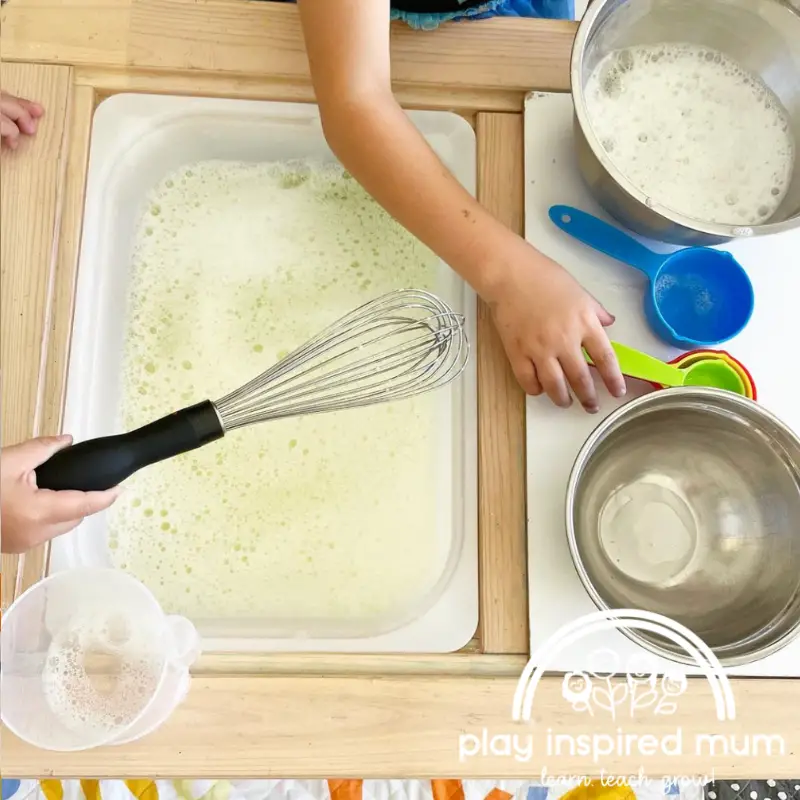
Activities and Games
I found that the bubble pouring station wasn’t just about watching bubbles float and pop.
It transformed into a world of learning through play.
My little ones became chefs, scientists, and artists all at once.
They learned about transferring bubbles from one container to another, honing their bilateral coordination without even realizing it.
It was mesmerizing to watch their tiny hands work with such focus.
Using simple kitchen supplies like a whisk and dishwashing liquid, they whipped up a storm of bubble fun.
They laughed as they whisked, creating more bubbles than I thought possible.
This easy sensory play fascinated them, teaching gross motor skills as they moved around the flisat table.
Their creativity soared as they explored different ways to play with the bubbles, embodying the essence of learning at home through play to learn.
Not only did this activity keep them engaged, but it also served as a messy play endeavor that was surprisingly easy to clean up.
Thanks to a waterproof play mat, the spills and splashes were contained, proving that learning through play can be both fun and manageable.
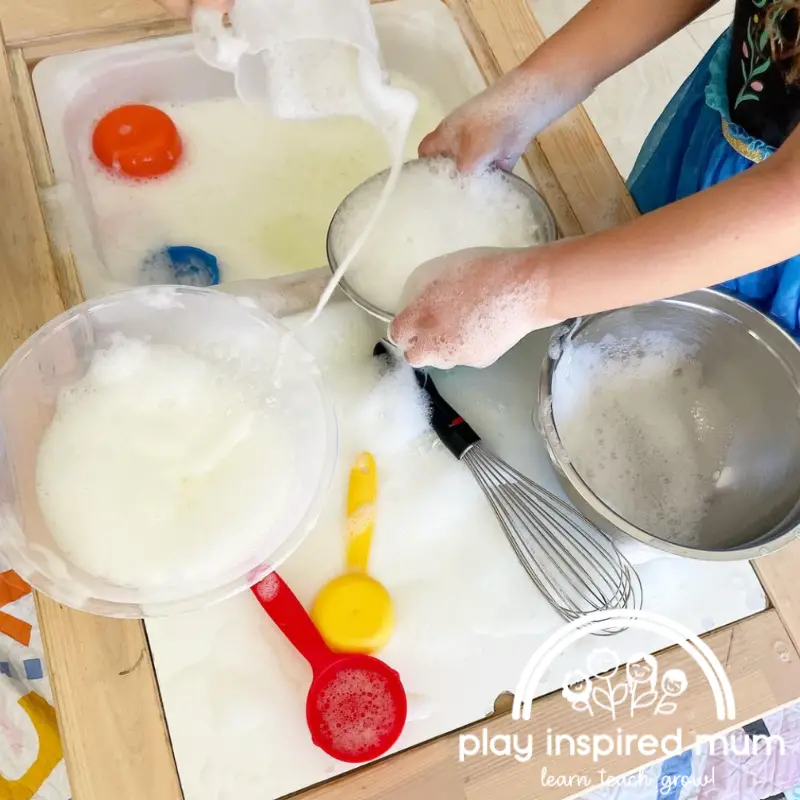
Tips for Mess-Free Play
I’ve tackled bubble and water play with a fair share of excitement and dread.
Excitement because I know toddlers and preschoolers love it.
Dread, due to the mess that can ensue.
But, I discovered some foolproof strategies to keep things tidy.
First, laying down a waterproof play mat is crucial.
This simple step catches spills and splashes, making cleanup a breeze.
I then realized that keeping a whisk and a portion of dishwashing liquid within reach meant quick foam creation without leaving the play area.
It was a game-changer, allowing us to focus on the fun without constant back-and-forth.
Another lifesaver was assigning specific kitchen supplies for transferring and pouring.
This not only minimized spills but also encouraged learning through play.
By establishing these practices, I ensured our bubble play was both engaging and mess-free, proving that with a bit of preparation, managing a bubble pouring station doesn’t have to be a daunting task.
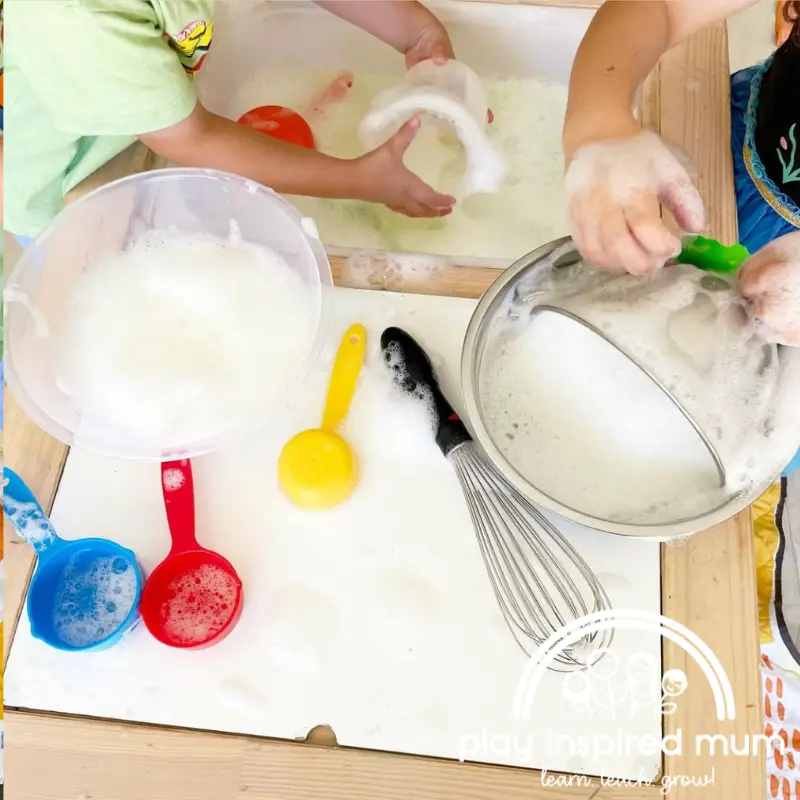
Expanding the Learning Experience
I found that taking bubble play beyond mere fun was crucial.
Engaging toddlers and preschoolers in this sensory-rich experience allowed me to weave in learning opportunities seamlessly.
We delved into colour mixing lessons.
I had them guess what would happen when we combined different bubble solutions coloured with food colouring.
This activity was not only about predicting but also observing the magic unfold.
Measuring exercises became an integral part of our play.
We used kitchen supplies like measuring cups and spoons to create the perfect bubble mixture.
This step introduced basic math skills in a hands-on way.
They eagerly scooped and poured, learning concepts of full, half, and quarter measurements without even realizing it.
Simple science experiments added depth to our exploration.
Discovering why bubbles form and what makes them pop introduced basic science concepts.
We discussed surface tension and experimented with adding dishwashing liquid to water to see how it changes the water’s properties.
These activities bridged play with learning, making every bubble bursting moment an educational one.
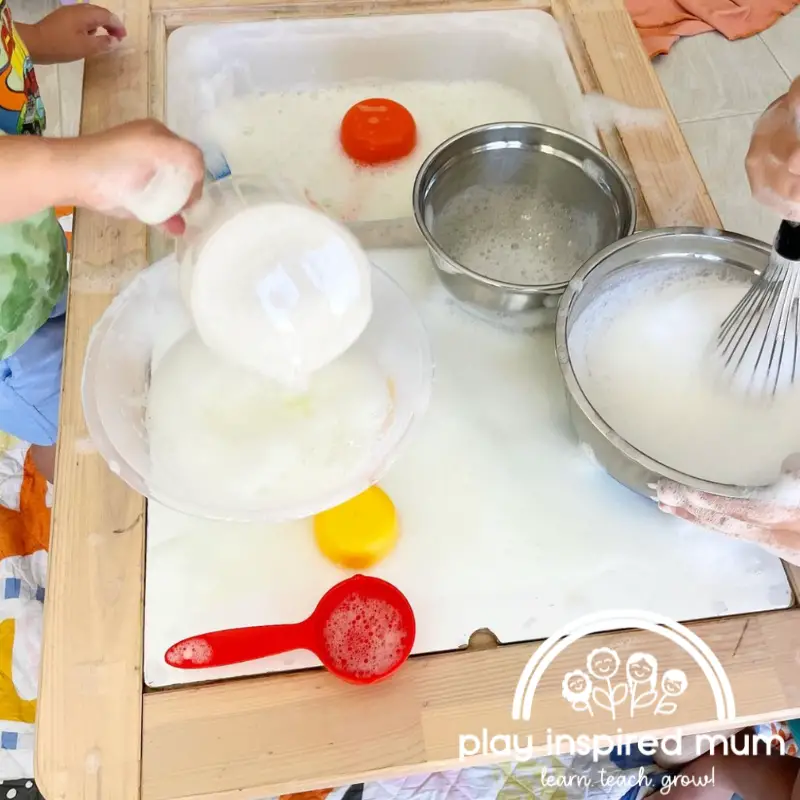
Bubble Play Beyond the Pouring Station
Stepping away from the bubble pouring station, I’ve found that taking bubble play outdoors opens up a galaxy of immersive experiences for tiny tots and eager preschoolers alike.
Armed with nothing more than dishwashing liquid, water, and a collection of whimsical tools, you and I can transform a simple backyard into a bustling hub of joy and discovery.
The combination of fresh air and the joy of chasing iridescent bubbles creates unforgettable moments of happiness.
In an outdoor setting, the possibilities for play are as endless as the sky above us.
I urge you to experiment with kitchen supplies, such as whisks and teapots, to enhance this experience.
By doing so, not only do we foster an environment of learning through play, but we also help in refining their gross motor skills as they leap and bound after each elusive sphere.
Try utilizing different tools, ranging from small wands for delicate bubbles to large ones for giant orbs, captivating their attention and encouraging active participation.
My children love adding nature items from the garden into their bubble play.
Flowers, pieces of mulch, bark, leaves and fruits all get torn, shredded, mixed and blended.
While the play would start off in their play table, it never really takes long for them to venture to their mud kitchen for more resources.
Before too long, the line becomes blurred between where the play begins and ends.
Bubbles and kitchen fuel their story telling and creative play. Its so rewarding to sit back and spectate the snippet of their imagination as they bring it to life right before my eyes.
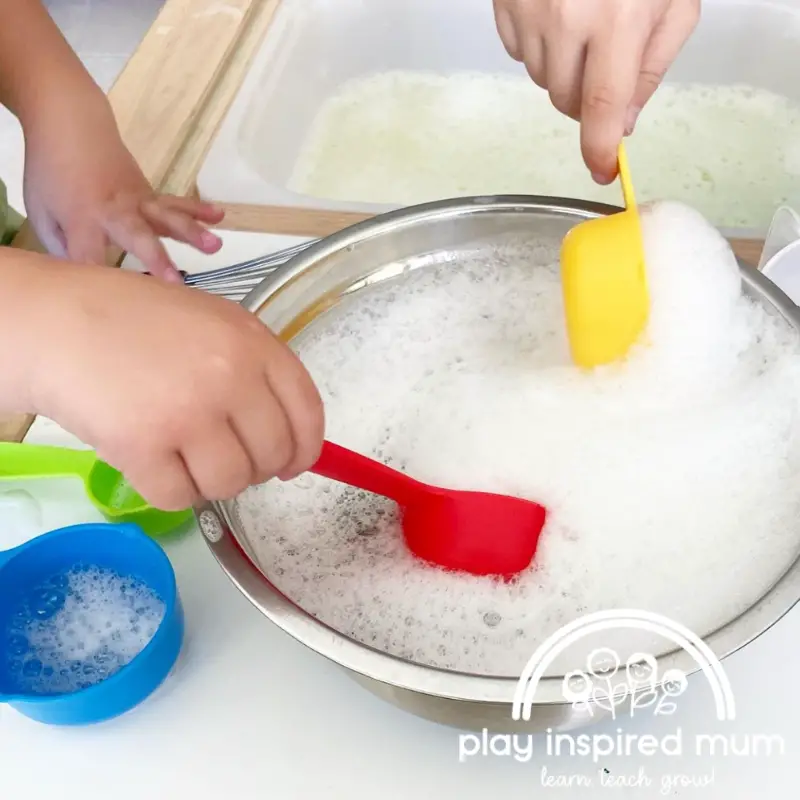
Wrapping Up Bubbles of Joy
I’ve steered us through the bubbly world of bubble play, a space where toddlers and preschoolers not only dive into fun but also into a sea of learning opportunities.
We ventured into creating a bubble pouring station, an activity brimming with the chance to explore, learn, and grow.
This journey showed us that the fusion of water play ideas with a squirt of dishwashing liquid can unlock endless hours of joy and developmental benefits.
In setting up our stations, we gathered kitchen supplies, ensuring everything was non-toxic and safe.
We mixed, we whisked, and, above all, we embraced the mess.
The essence of easy sensory play unfurled as little hands engaged in transferring bubbles, fostering bilateral coordination, and polishing gross motor skills.
These moments at the flisat table or wherever we laid our waterproof play mat were more than just play; they were the building blocks for learning at home.
As we wrap up, I urge you to keep the bubbles flowing in your educational endeavors.
Remember, this isn’t merely about messy play; it’s about harnessing play to learn principles that are pivotal for child development.
Beyond the bubble pouring station lies a broader landscape of sensory play ideas waiting to be explored.
Whether it’s through bubble play, water play, or any form of sensory engagement, the goal remains the same: to equip our children with the tools they need to navigate the world.
So, let us continue to embrace learning through play, for it is through these joyous bubbles of experiences that our young ones will soar.
